THE SUBJECT LINE WOULD NOT ALLOW ENOUGH SPACE FOR ME SAY, THIS IS ACTUALLY DEDICATED TO ALL WHO HAVE, WHO ARE, & THOSE WHO WILL, SERVE IN THE NAME OF FREEDOM WORLDWIDE, NEVER FORGET THE POW/MIA!
Robbie

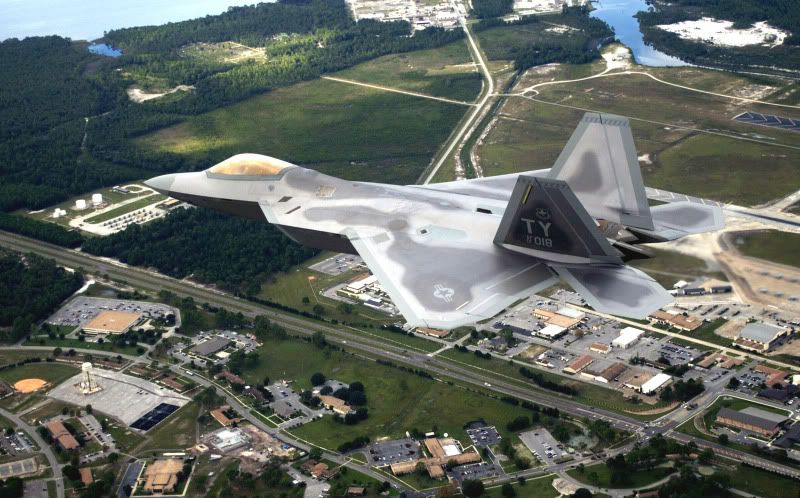
USFG PHOTO
TYNDALL AIR FORCE BASE, Fla. -- The first operational F/A-22 Raptor flies over the base on its delivery flight.
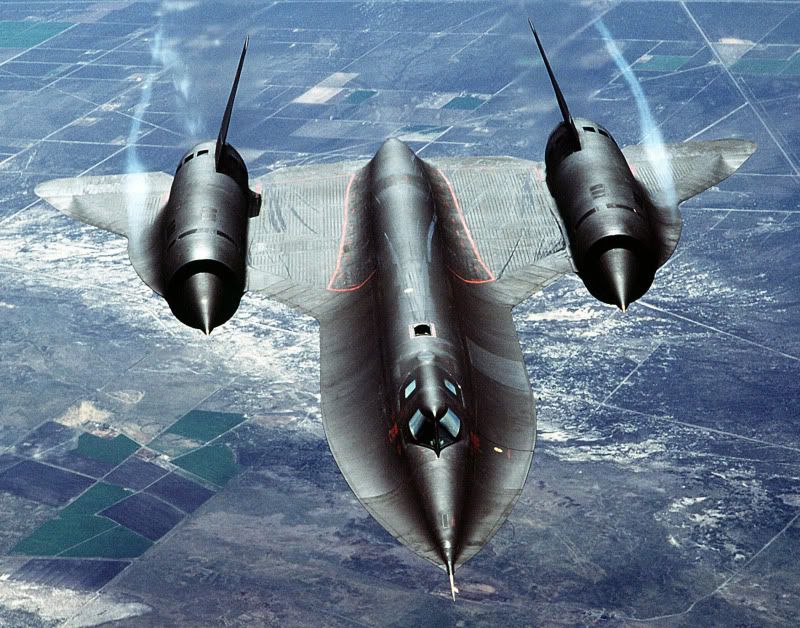
USFG PHOTO
An air-to-air overhead front view of an SR-71A strategic reconnaissance aircraft. The SR-71, unofficially known as the "Blackbird," is a long-range, advanced, strategic reconnaissance aircraft developed from the Lockheed A-12 Oxcart and YF-12A aircraft. The United States Air Force retired its fleet of SR-71s on Jan. 26, 1990, but returned them in 1995 until January 1997. Throughout its nearly 24-year career, the SR-71 remained the world's fastest and highest-flying operational aircraft.
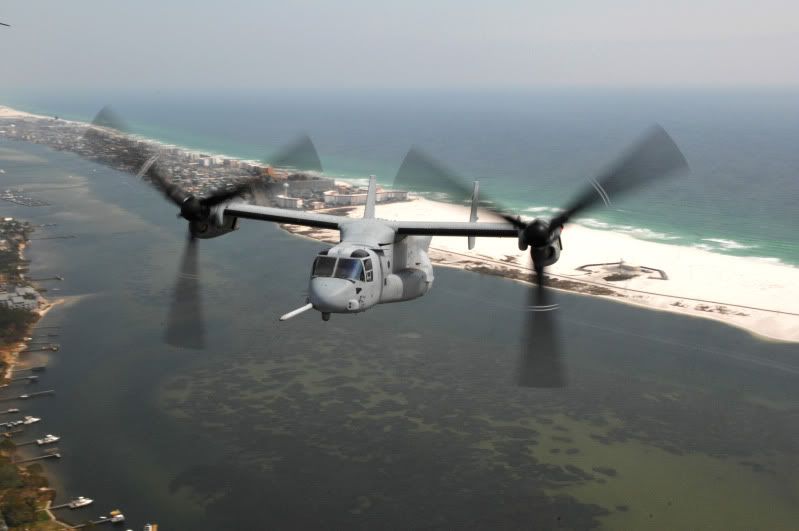
USFG PHOTO
GULF OF MEXICO (March 30, 2007) - An MV-22 Osprey from Marine Medium Tiltrotor Training Squadron (VMMT) 204, Marine Corps Air Station New River, N.C., flies over the Gulf of Mexico and surrounding areas in Florida. The Marines are on a two-week training exercise at Hurlburt Field, Fla., to allow pilots and other aircrew members to train and navigate in an unfamiliar environment.
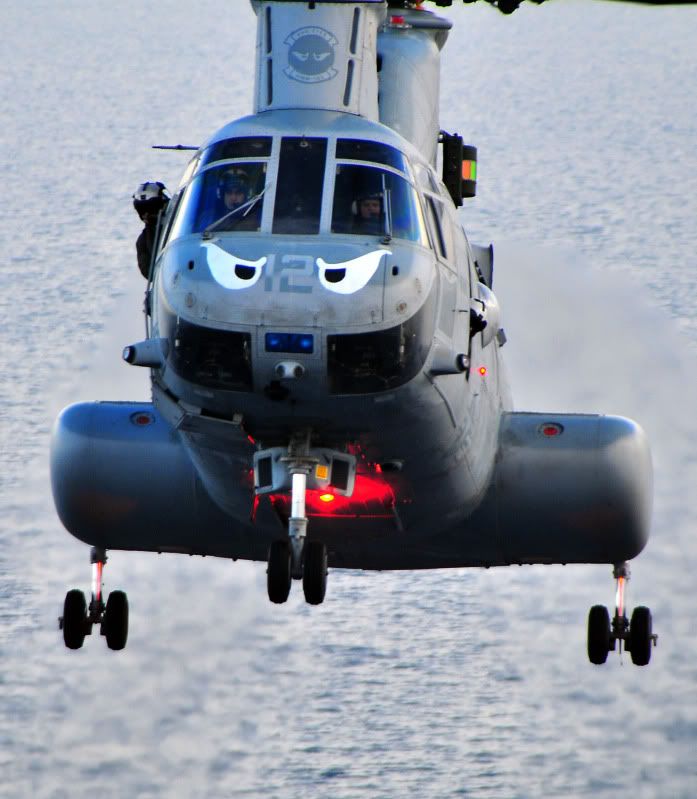
USFG PHOTO
PACIFIC OCEAN (Dec. 6, 2008) A Marine CH-46E helicopter assigned to the "Evil Eyes" of Marine Medium Helicopter Squadron (HMM) 163 (REIN) lands aboard the amphibious transport dock ship USS New Orleans (LPD 18). New Orleans is on a certification exercise as part of the Boxer Expeditionary Strike Group in preparation for an upcoming deployment.

USFG PHOTO
CAMP LEMONIER, Djibouti (Jan. 19, 2008) Air Force HC-130 loadmasters Senior Airman Daniel Sullivan and Senior Airman Renea Zachary, assigned to the 71st Expeditionary Search and Rescue Squadron based at Moody Air Force Base, Ga., communicate with CH-53 Sea Stallions assigned to Marine Heavy Helo Squadron 464, based at Marine Corps Air Station, Jacksonville, N.C., during in-air refueling operations with Combined Joint Task Force-Horn of Africa.
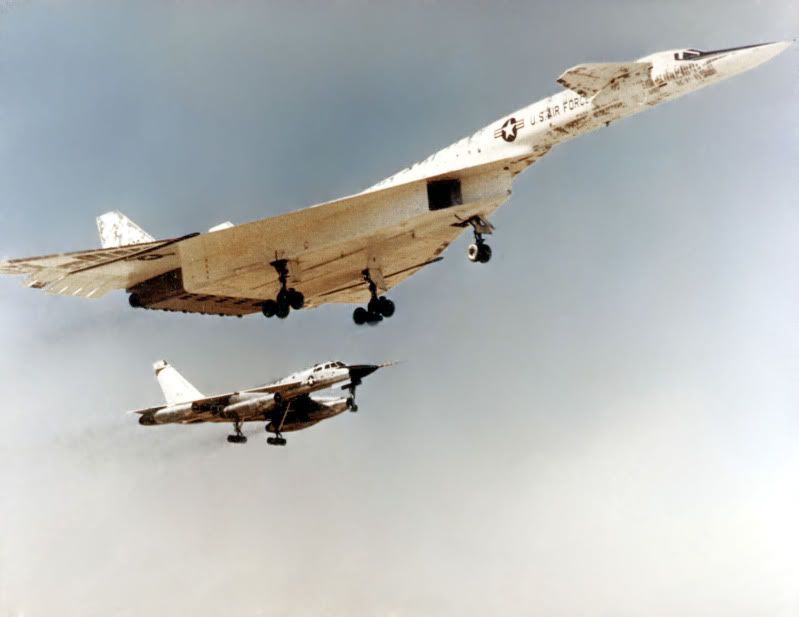
USFG PHOTO
North American XB-70A with Convair B-58A chase aircraft before landing. The white colour is pardly burned down through the high temperatures during a high-speed test.

USFG PHOTO
Low angle right side view of an A-7 Corsair II aircraft of the 76th Tactical Fighter Squadron, 23rd Tactical Fighter Wing, airdropping Mark 82 hi-drag bombs over the Tyndall Air Force Base range.

USFG PHOTO
A three-quarter portside aerial view of an RA-5C Vigilante aircraft (b/n 156608), Reconnaissance Attack Squadron 7 (RVAH-7) known as the "Peacemakers of the Fleet" and was assigned to the USS RANGER (CV 61) from February 21 to September 22, 1979. This photograph may show the Vigilante's last flight, since all Vigilante aircraft were officially retired in September 1979 and the RVAH-7 was officially decommissioned in October 1979.

USFG PHOTO
Two U.S. Air National Guard McDonnell F-101B-115-MC Voodoo aircraft (s/n 59-0421, 59-0429) landing at Niagara Falls Air Base during exercise Sentry Castle '81 on 1 July 1981. The aircraft were assigned to the 107th Fighter Interceptor Group, 136th Fighter Interceptor Squadron, New York Air National Guard. Note that the drag chute of the F-101B 59-0429 is just deploying. This aircraft is today on display at the Texas Air Museum, Caprock Chapter, Slaton, Texas (USA).
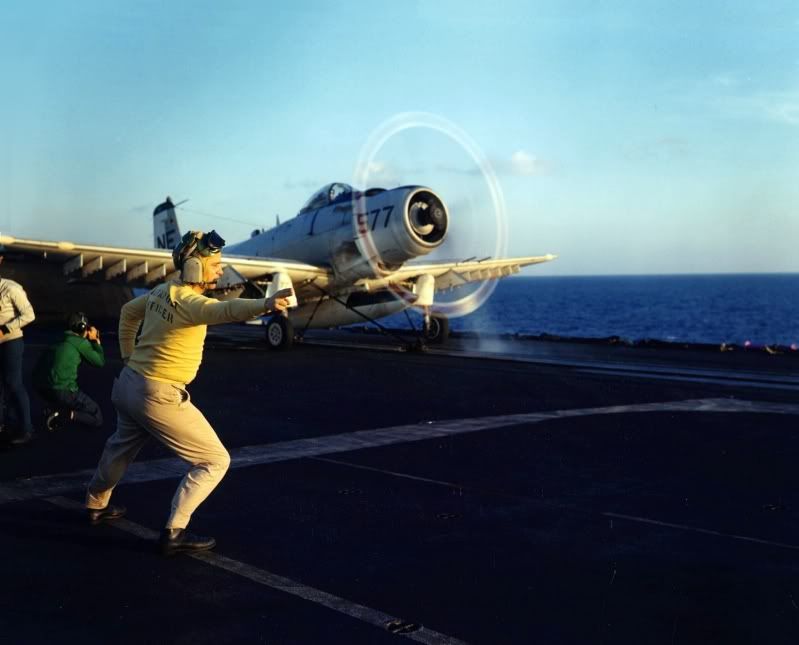
USFG PHOTO
A U.S. Navy Douglas A-1H Skyraider (BuNo 139768) from attack squadron VA-25 Fist Of the Fleet, Carrier Air Wing 2 (CVW-2), on the port catapult of the aircraft carrier USS Midway (CVA-41). This plane was flown by Lt. Clint Johnson on 20 June 1965, when four A-1s from VA-25 were attacked by North Vietnamese Mikoyan-Gurevich MiG-17s. Johnson and his wingman Lt. Charlie Hartman shot down a MiG-17 which attempted a head-on pass.
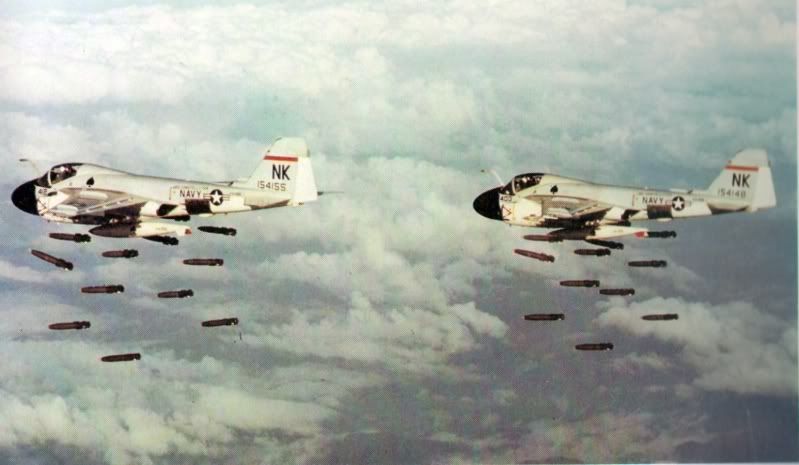
USFG PHOTO
A U.S. Navy Grumman A-6A Intruder aircraft (BuNo 154148, 154155) from attack squadron VA-196 Main Battery dropping Mk 82 227 kg (500 lbs) bombs over Vietnam. VA-196 was assigned to Attack Carrier Air Wing 14 (CVW-14) aboard the aircraft carrier USS Constellation (CVA-64) for a deployment to Vietnam from 29 May 1968 to 31 January 1969.
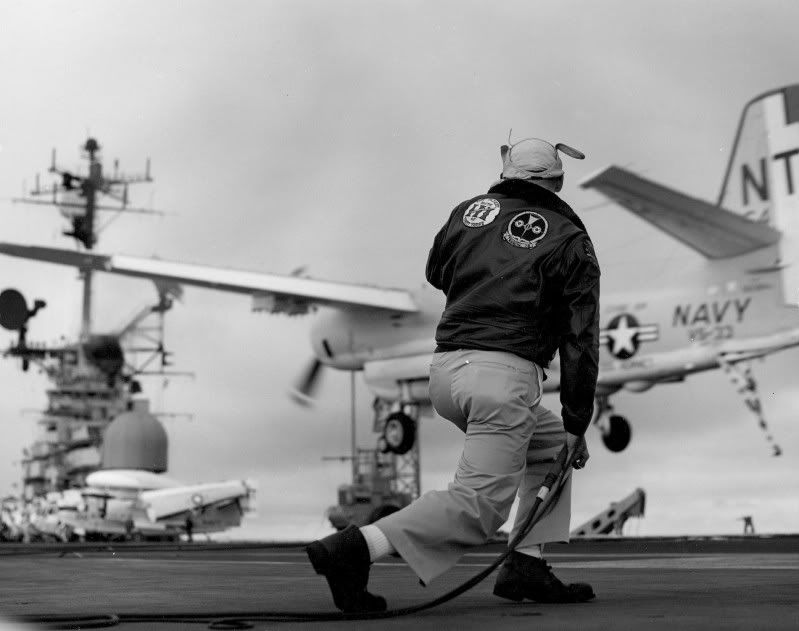
USFG PHOTO
A U.S. Navy Grumman S-2E Tracker of antisubmarine squadron VS-33 Screwbirds, Carrier Anti-Submarine Air Group 59 (CVSG-59), passes by a Landing Signal Officer (LSO) on its way to trapping on board the aircraft carrier USS Hornet (CVS-12), in 1970.
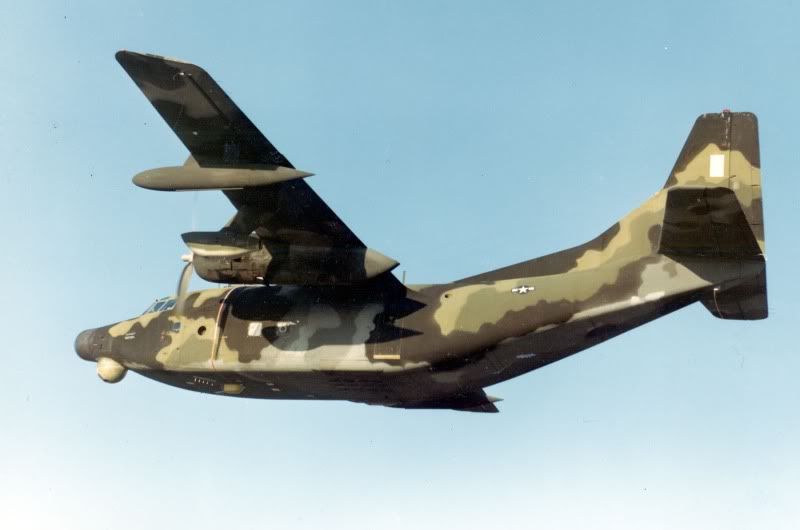
USFG PHOTO
Fairchild NC-123K ("permanent test"; also called AC-123K) Provider used over Ho Chi Minh Trail. It was outfitted with infrared scanner, low-light level television, a laser range finder, and cluster bomb dispensers

USFG PHOTO
A U.S. Navy North American RA-5C Vigilante piloted by Cdr D. E. Deardolph, executive officer of heavy reconnaissance squadron RVAH-5 Savage Sons, assigned to Attack Carrier Air Wing 6 (CVW-6), is being hooked on the port bow catapult prior to being launced on a photographic mission from the aircraft carrier USS America (CVA-66), in 1966/67.

Pfc. Mike Clausen who earned the Medal of Honor during a Jan. 31, 1970 mission to rescue members of 3rd platoon, Alpha Company, 1st Battalion, 1st Marine Division who were pinned down in a mine field.
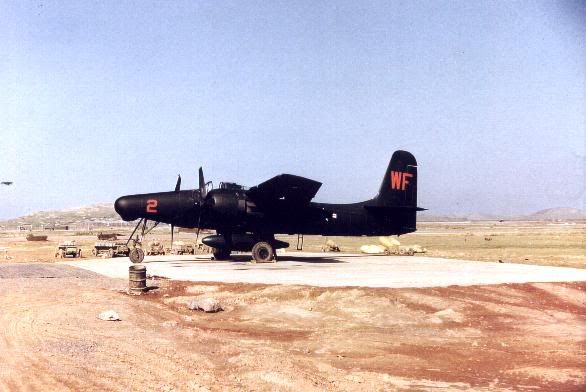
USFG PHOTO
A Grumman F7F-3N Tigercat night fighter of Marine night fighter squadron VMF(N)-513 Flying Nightmares at Wonsan, Korea, in 1952.

USFG PHOTO
U.S. Navy Grumman TBM-3R Avenger (BuNo 85905) of transport squadron VR-23 in flight over Korea, 25 June 1953.
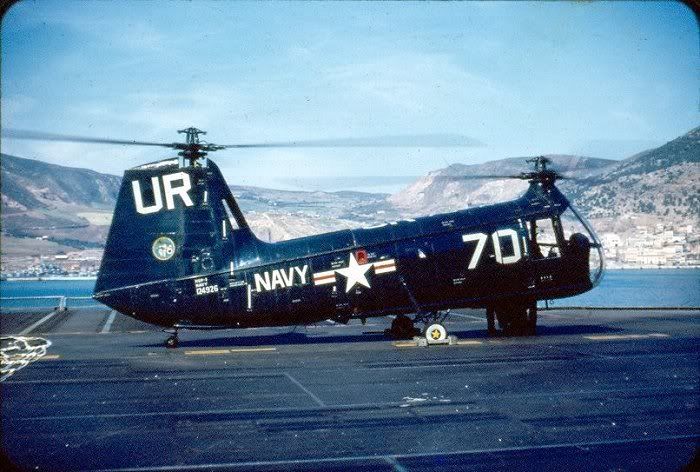
USFG PHOTO
A Piasecki HUP-1 Retriever (BuNo 124926) of U.S. Navy utility squadron HU-2 Fleet Angels aboard the aircraft carrier USS Midway (CVB-41) in the early 1950s.
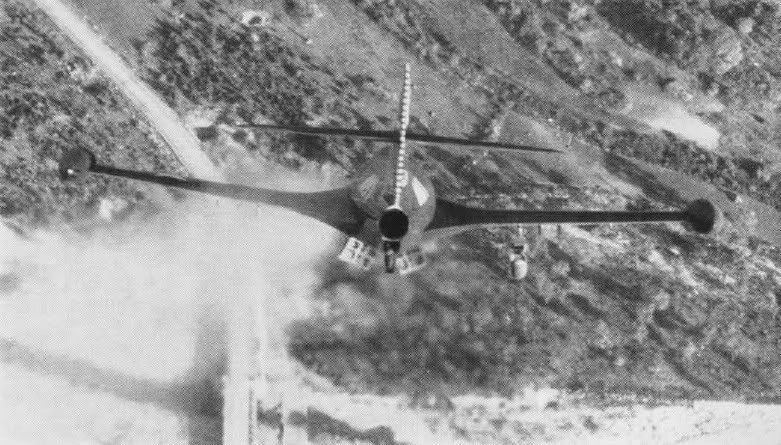
USFG PHOTO
The second of two photographs showing the bombing of a bridge during the Korean War. A Grumman F9F-2 Panther of fighter squadron VF-71, piloted by Lt. R. P. Yeatman, has fired the HVAR rockets under the wings (hence the smoke) and already dropped the left 113 kg (250 lb) bomb. The bomb under the right wing is just coming off. VF-71 was assigned to Carrier Air Group Seven (CVG-7) aboard the U.S. aircraft carrier USS Bon Homme Richard (CVA-31), which was deployed to Korea from 20 May 1952 to 8 January 1953. VF-71 had the tail code "L-1XX" during that deployment.
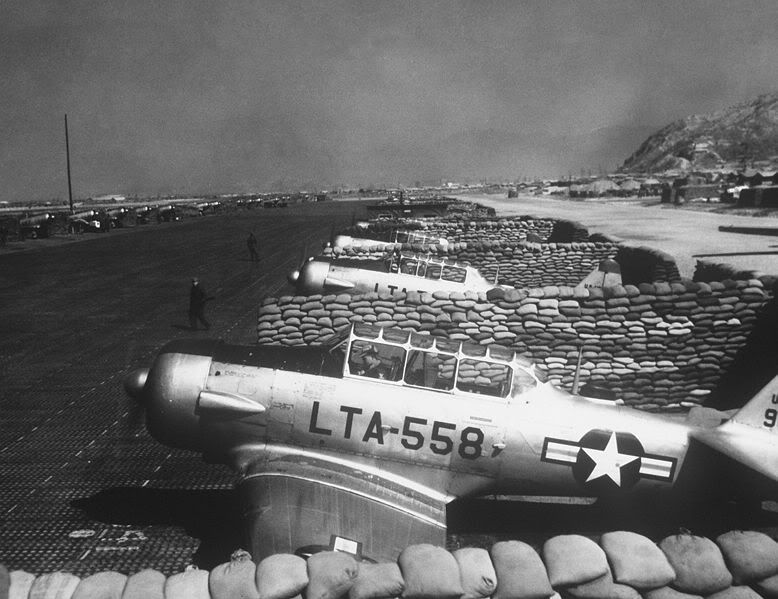
USFG PHOTO
U.S. Air Force North American T-6s are parked in a revetment area at an advanced airstrip in Korea, on 9 March 1953. The Texans were used in Korea by forward air controllers.

USFG PHOTO
View of the flight deck of the U.S. aircraft carrier USS Boxer (CV-21) on 19 May 1951. Two Vought F4U-4 Corsair fighters from fighter squadron VF-884 Bitter Birds (A-2XX) and VF-791 Fighting Falcons (A-4XX) are taking off. Also visible are Douglas AD-2/4Q Skyraiders of attack squadron VA-702 Rustlers and Grumman F9F-2 Panthers of VF-721 Iron Angels. A Sikorsky HO3S-1 of helicopter utility squadron HU-1 Det. F Pacific Fleet Angels hovers over the crash site of a VF-791 F4U-4 in the background. The Boxer was deployed to Korea with Carrier Air Group 101 (CVG-101) from 2 March to 24 October 1951.
Fifteen B-29s and one B-29A were adapted for air rescue duty after World War II. Nicknamed "Super Dumbo" and designated SB-29. These aircraft were modified to carry an air-droppable A-3 Edo lifeboat. The primary mission of the SB-29 was rescue support for units flying long distances over water. The "Super Dumbo" retained all the defensive armament of the production bomber with the exception of the forward lower gun turret which was removed to make room for the AN/APQ-13 radome just behind the nose landing gear.
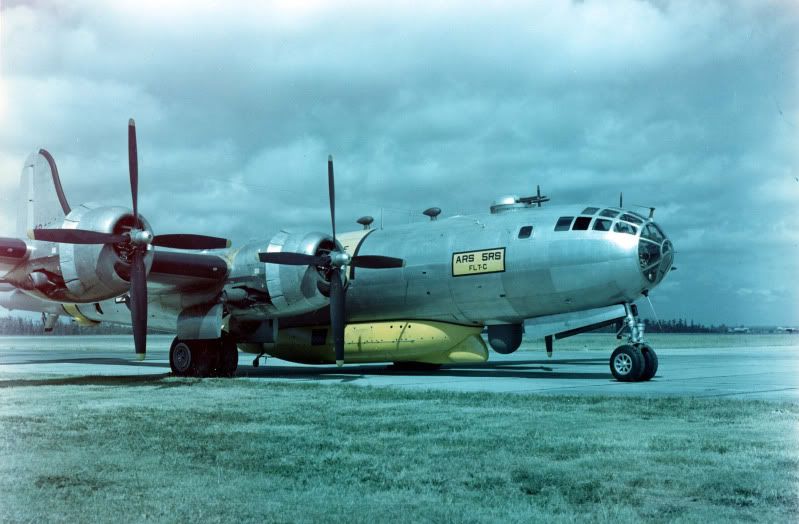
USFG PHOTO
When a downed aircrew was spotted in the water, the lifeboat was released from the aircraft. The lifeboat, which descended by parachute, was equipped with watertight compartments, self-righting floatation bladders, an inboard engine, food and water.
To Be Continued

================================================
Robbie





